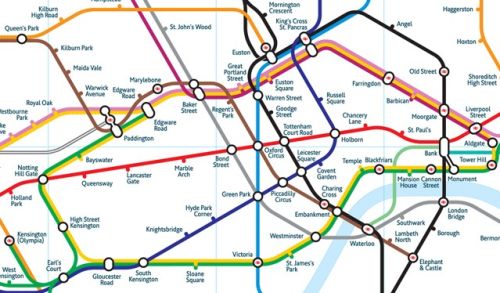Video
Point a camera at the sky, create a time lapse video of the clouds. Do the same thing every day of the year. Play back all the videos simultaneously in a grid. Voilà: a kind of phase-diagram visualisation, with seconds representing minutes and space representing seasons. Brilliant.
More detail here. Via Data Pointed.
Link
This is apparently pretty old, and with Google Earth and Street View already taken for granted it’s difficult to appreciate how impressive this is: in-browser 3D maps of major cities by Nokia. A plugin is required, and the sad thing is that I imagine that small barrier is enough to vastly reduce the number of people that will actually try it out.
Picture
Various incarnations of the London tube map regularly feature in Things: in the past I’ve posted about a to-scale tube map, a curvy tube map, and a travel-time interactive tube map.
Unsurprisingly, I rather like Mark Noad’s version, which is an ambitious attempt to make a tube map that is not just interestingly different but actually better than the current canonical version. By retaining the simplicity of design but improving geographic accuracy, I would say it succeeds.
Puzzle
This week, a very first world problem. If voice recognition software fails to understand something you say (e.g. Google voice search, xBox 360 Kinect voice commands, or Siri), what do you do? Having had this happen a few times now, I’m very aware that the natural human response of just saying the same thing but louder might not actually be the best thing to do. (I also imagine my neighbours don’t need to hear me shouting “Xbox go back! Xbox! Go! Back! Xbox go frickin’ back! Fine, don’t then!”)
For example, other approaches to ensure your input is recognised could include: reduce background noise; enunciate more clearly; speak in a monotone; move closer to or further away from the microphone; use a different phrasing; or attempt to put on an American accent.
Which of these is most likely to work? Is there a better approach that I’ve not included here? Is just speaking loudly actually the best approach after all?
Or is the failure rate of voice recognition inevitable and unacceptable in most contexts, and the whole notion flawed from the outset?
